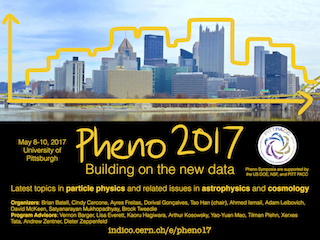Speakers
Description
The existence of tiny neutrino masses at a scale more than a million times smaller than the lightest charged fermion mass, namely the electron, and their mixings can not be explained within the framework of the exceptionally successful Standard Model. There are four ideas that has been proposed to explain the tiny neutrino masses. These include the see-saw mechanism with a right-handed neutrino at the GUT scale, and this is the most elegant mechanism. The other mechanisms are radiatively generated neutrino masses, the neutrino mass arising from a 2nd Higgs doublet having a tiny VEV and coupling only to the neutrinos, and finally the mirror model or simply the EW-scale νR model. The mirror model has new quarks and leptons of opposite chirality at the electroweak scale (for the same Standard Model gauge symmetry $SU(2)_W × U(1)_Y$) compared to what we have for the Standard Model. With a suitable modification of the Higgs sector, the EW-scale νR model satisfies the electroweak precision test and also the constraints coming from the observed 125-GeV Higgs scalar. Since in this model, the mirror fermions are required to be in the EW scale, these can be produced at the LHC giving final states with a very low background from the SM. One such final state is the same sign dileptons with large missing pT for the events. In this work, we explore the constraint provided by the 8 TeV data, and the prospect of observing this signal in the 13 TeV runs at the LHC. Additional signals will be the presence of displaced vertices depending on the smallness of the Yukawa couplings of the mirror leptons with the ordinary leptons and the singlet Higgs present in the model. Of particular importance to the EW-scale νR model is the production of νR which will be a direct test of the seesaw mechanism at collider energies.
